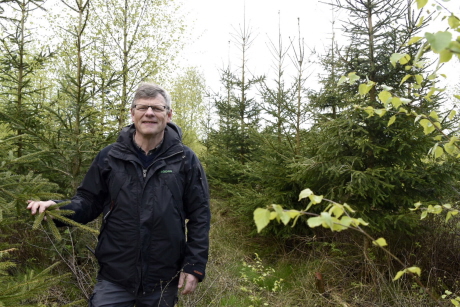Ten years after Cyclone Gudrun, the now reforested felled areas have become a large carbon sink and will remain so for more than 50 years. This has been shown by the development of Södra's property in Toftaholm, one of the worst affected by the storm in 2005, with 130,000 m³sub of wind-felled forest.

A clearing, where the forest has been harvested or wind-felled, for example, releases CO2. Growing forest, on the other hand - particularly young forest - absorbs CO2. When Gudrun swept over Sweden ten years ago, there were major concerns that the resulting deforestation would become a "carbon bomb" for many years to come. However, due to rapid processing of the storm-damaged timber and ambitious reforestation goals, re-growth has been faster than expected and eight years later, the forest has now begun to absorb more CO2 than it releases. A growing forest helps to reduce climate impact. Due to the vastness of the area that was deforested, which also represents the most fertile soils in Sweden, this is particularly important.
"At the time, there was a fairly distressing discussion on how much carbon would be released. The finger was pointed at poor forest management and it would probably take a long time before new forest began to absorb CO2," says Göran Örlander, Head of Forest Management at Södra.
Johan Bergh, professor at Linnaeus University, has studied the development of Södra's soils and claims that the forest began to absorb more carbon than it releases after replanting eight years ago.
"Measurements of the carbon balance show that while overall emissions of CO2 were about 80 tonnes per hectare, we saw a clear annual variation of absorption/emission after five years, and the forest now absorbs more than it releases. Reforestation has been successful and in the beginning, emissions declined as ground vegetation increased. With a rotation period of about 65 years, this forest will absorb and store large amounts of CO2 for more than 50 years," says Johan Bergh.
The new forest will now be managed with best management practices to reduce storm damage, such as cleaning and thinning performed correctly and in a timely manner. Cleaning and thinning are now carried out at an early stage, and in a way that makes trees grow faster in width to increase their stability, since taller trees are more prone to windthrow. This management approach will also enable earlier harvesting, generating a higher return on forests for forest owners.
"Gudrun gave us invaluable experience and knowledge for the continued development of responsible forestry," says Göran Örlander.
For questions, please contact:
Göran Örlander, Head of Forest Management
tel: +46 470 893 62
Annica Gerentz, Director of Communications
tel: +46 470 894 81
